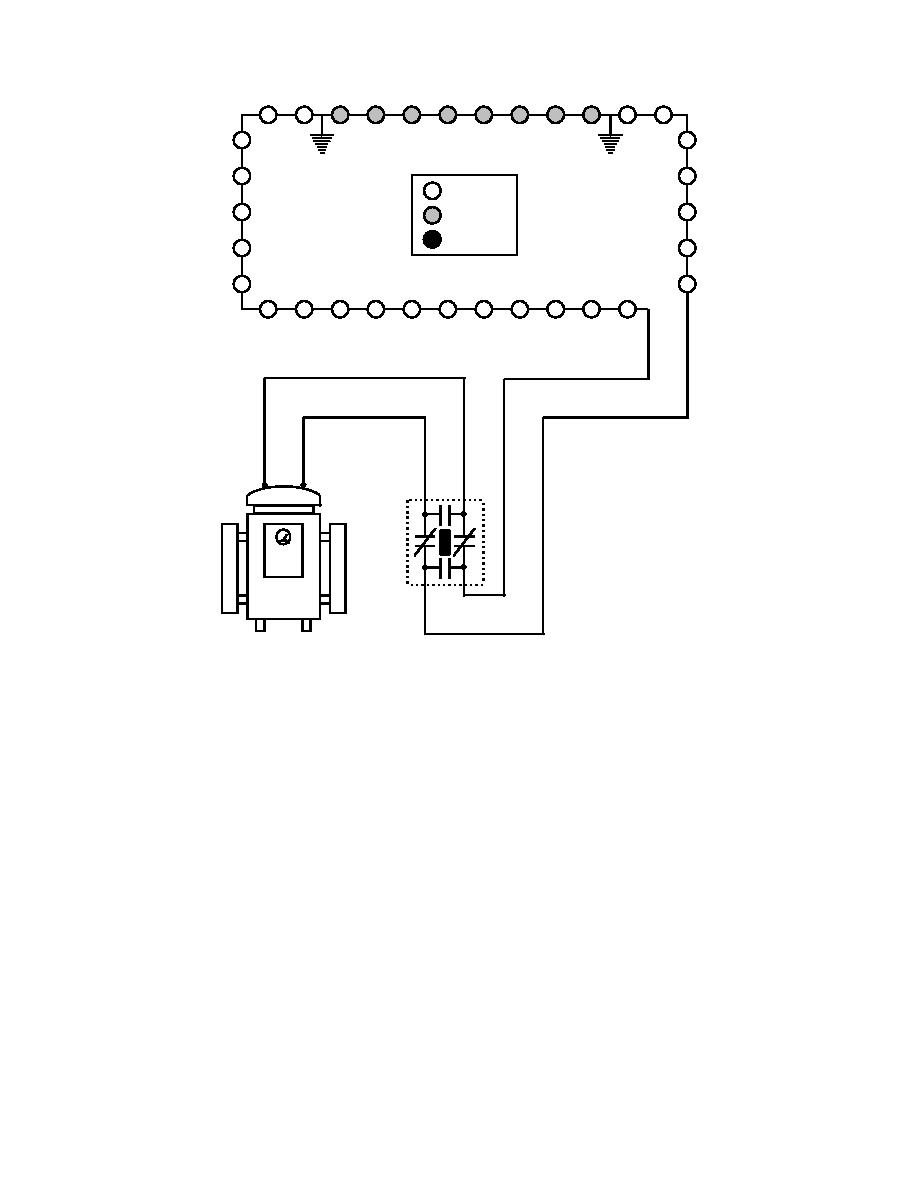

Custom Search
|
|

|
||
 MIL-HDBK-1023/4
= ON
= DIM
= OFF
S1
ON
REGULATOR
Figure 23
Typical Load Circuit With S1 Cutout - Two Grounds on Load
e) Intentional Ground Method. The intentional ground method of airfield load
troubleshooting is very useful in detecting and locating low and medium resistance grounds.
When used to locate grounds, this method presents little or no hazard to regulators, isolation
transformers, connector kits and cable.
(1) Grounds are common to most series circuit failures. Shorts, opens and high
resistance sections of cable frequently start as high resistance grounds. If ignored long enough
they become actual ground faults or worse. With this fact in mind it is easy to understand the
importance of detecting, locating, and repairing grounds as they occur.
(2) The "Intentional Ground Method" connects a grounded #8 AWG cable to one
side of the regulator output, providing an alternate parallel path for current to flow to the series
circuit via the earth and the ground fault on the circuit. The regulator should be operated at its
highest current level, producing the highest level of current on the circuit. Also, larger regulators
with higher kilowatt ratings (higher output voltage) will be more successful in this type of
troubleshooting. However, do not mix 20 ampere loads with 6.6 ampere loads.
(3) When the intentional ground is conducting current, the lights on the paralleled
portion of the circuit dim due to the reduced amount of current flow, making it easy to find the
location on the load where the current is entering the load via the ground fault. Observing the
86
|
 |
|
 |
||